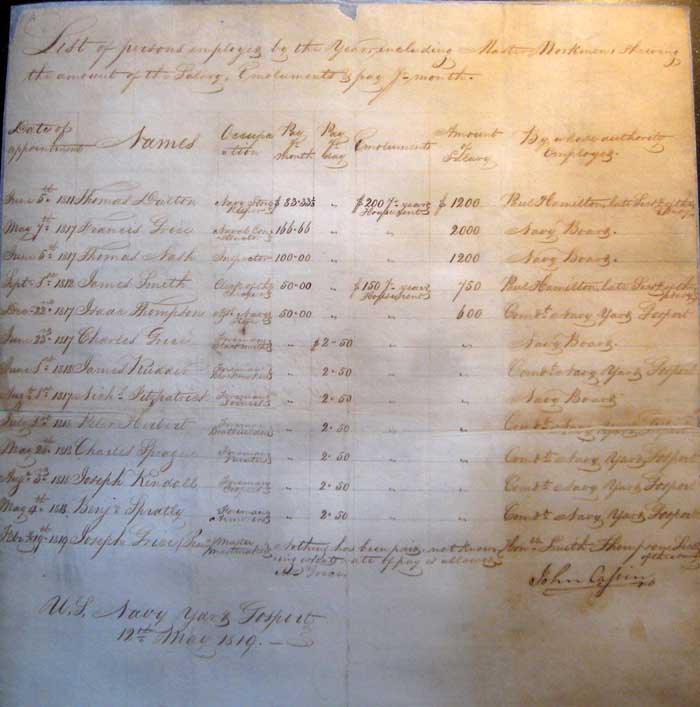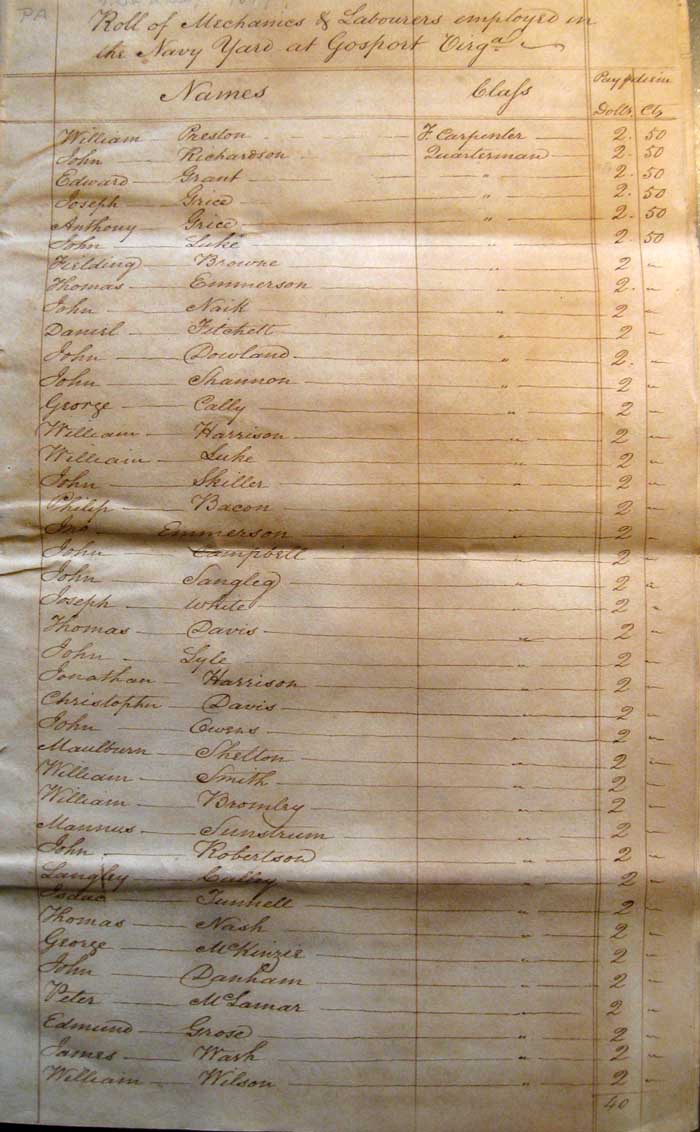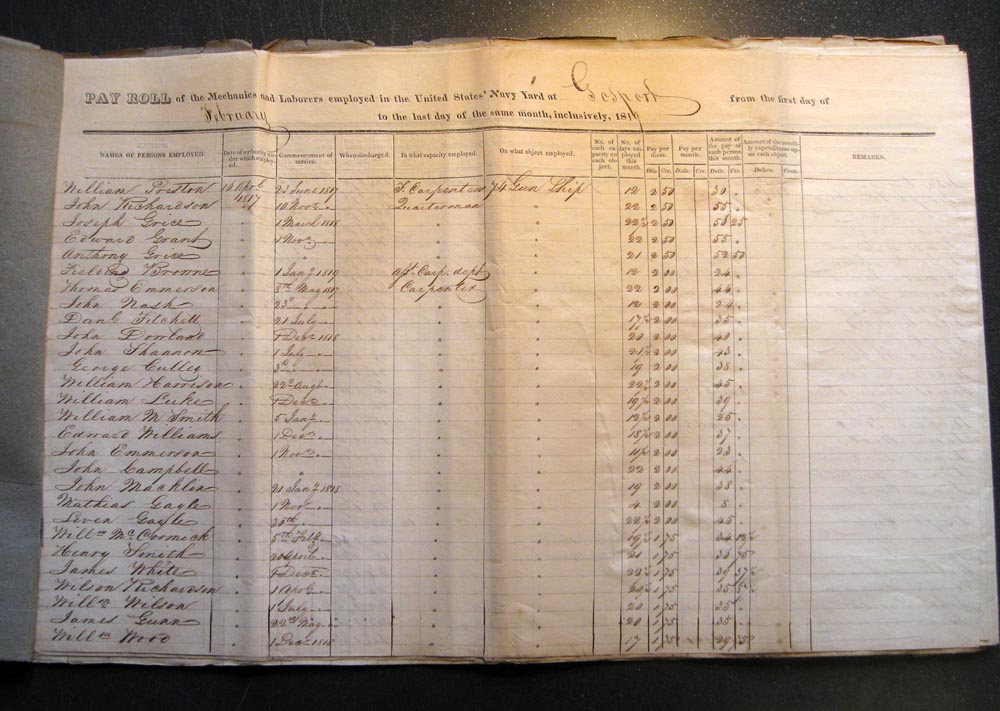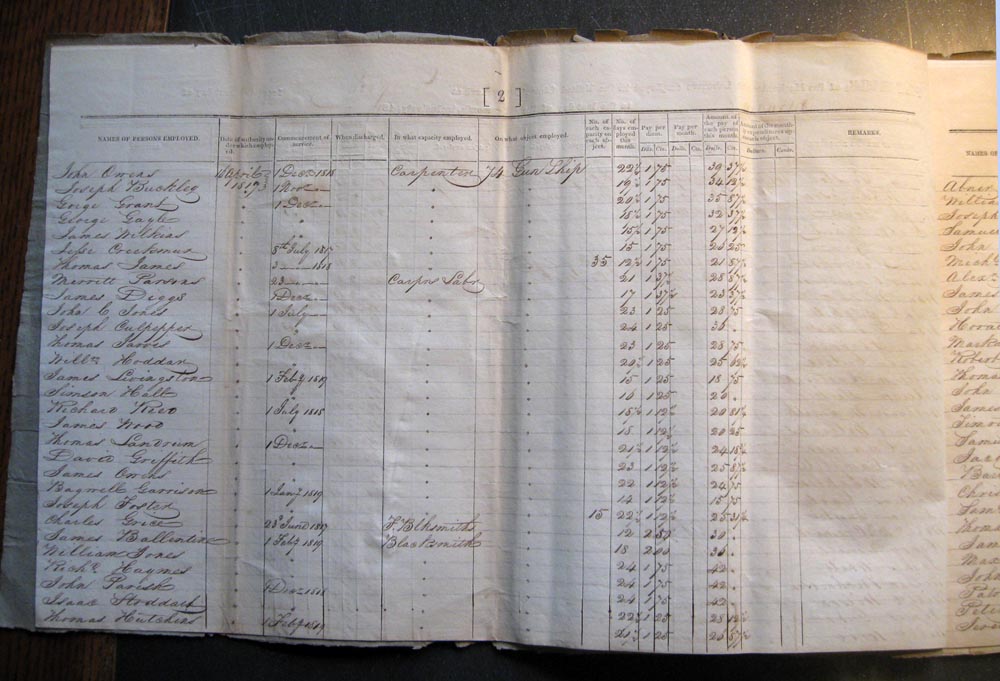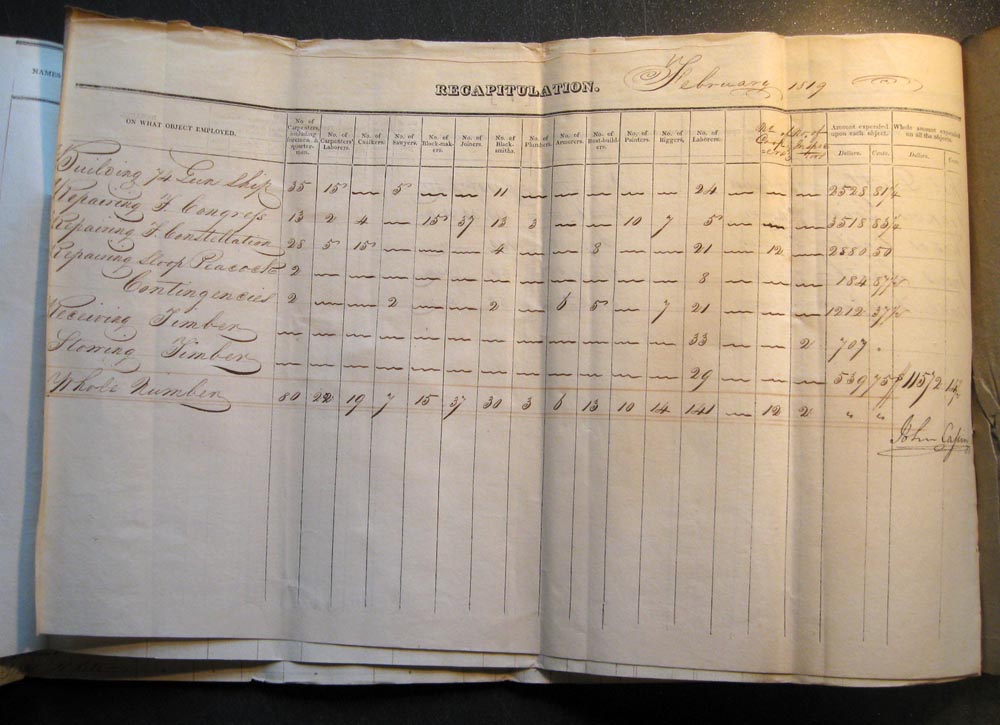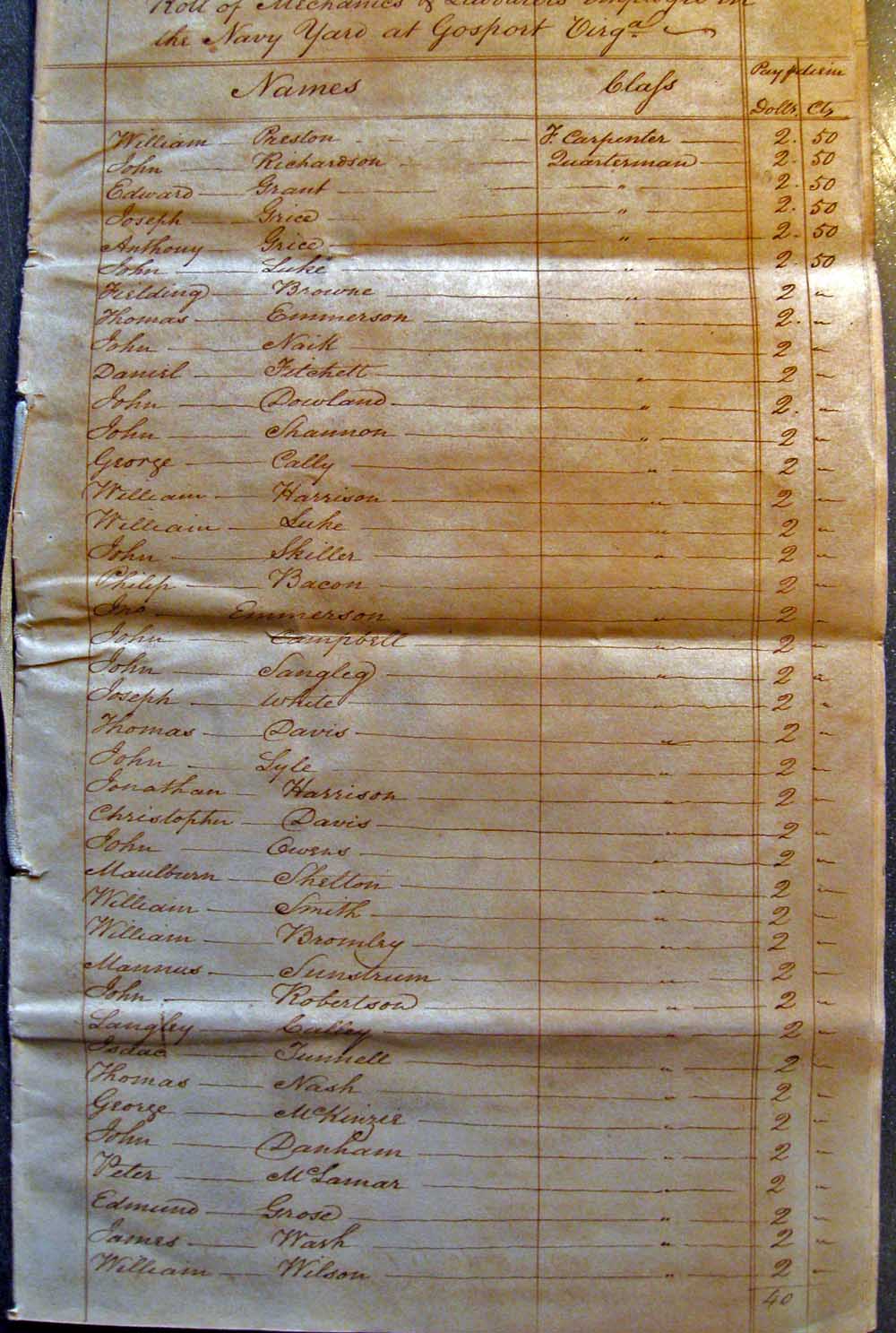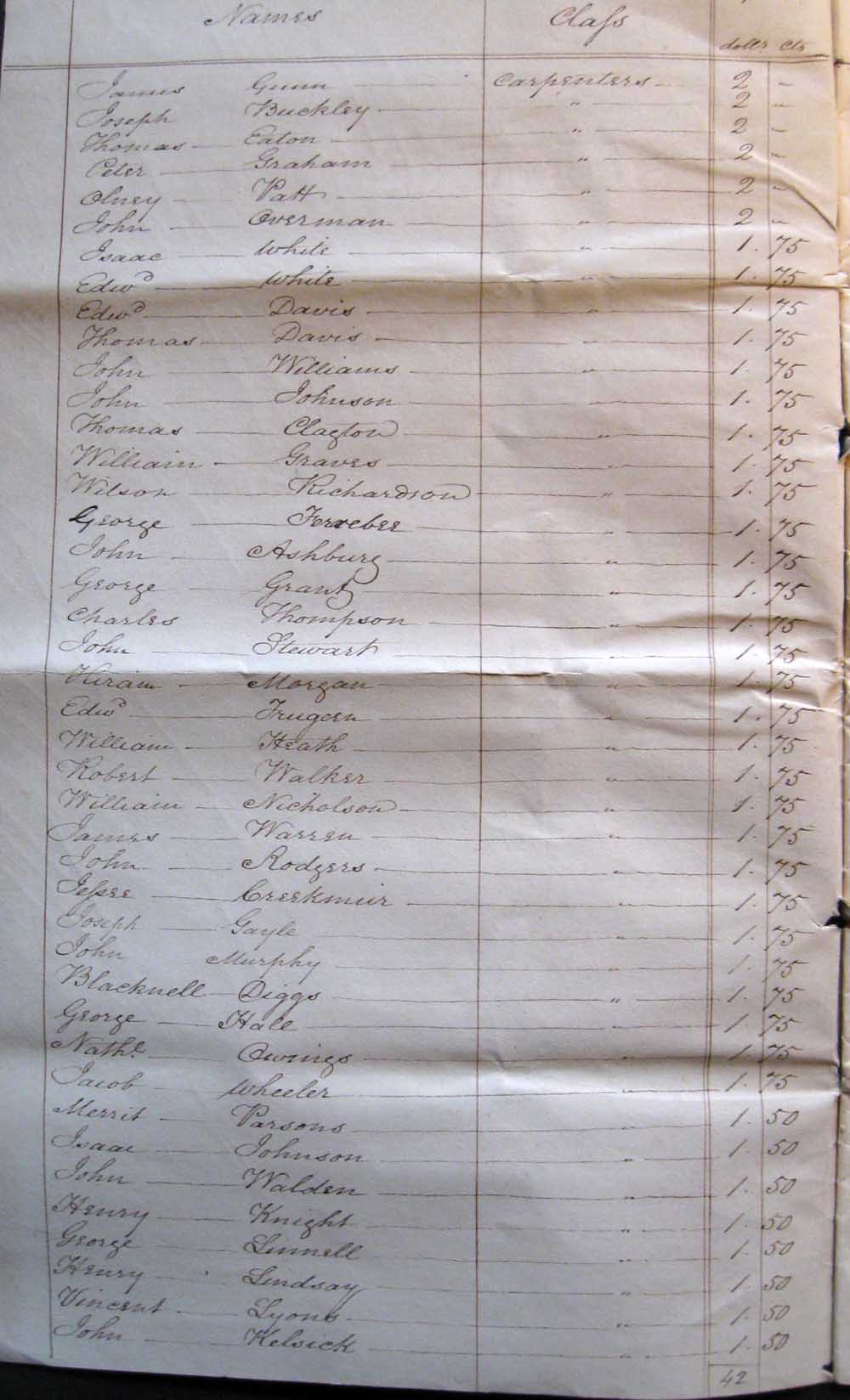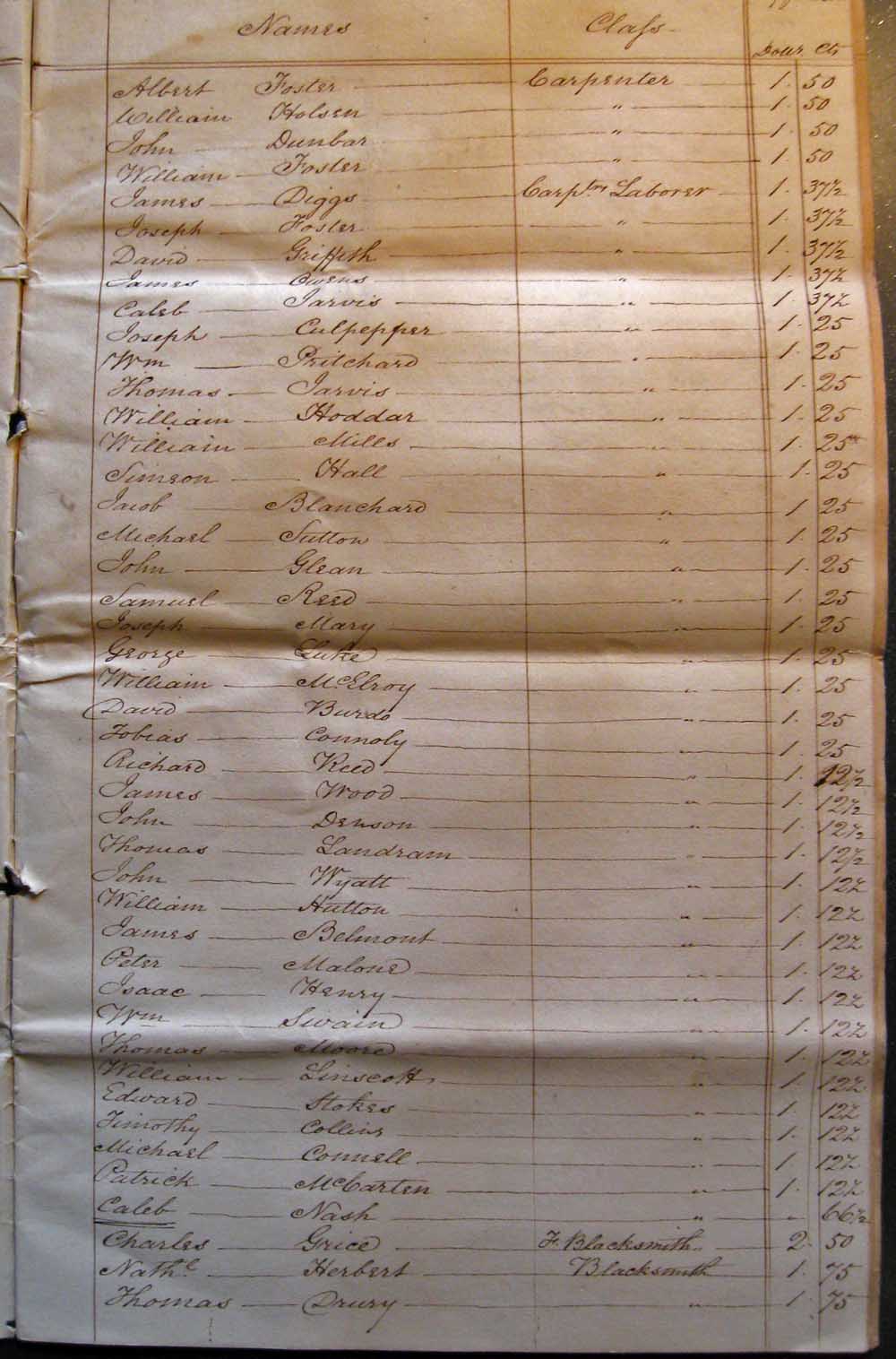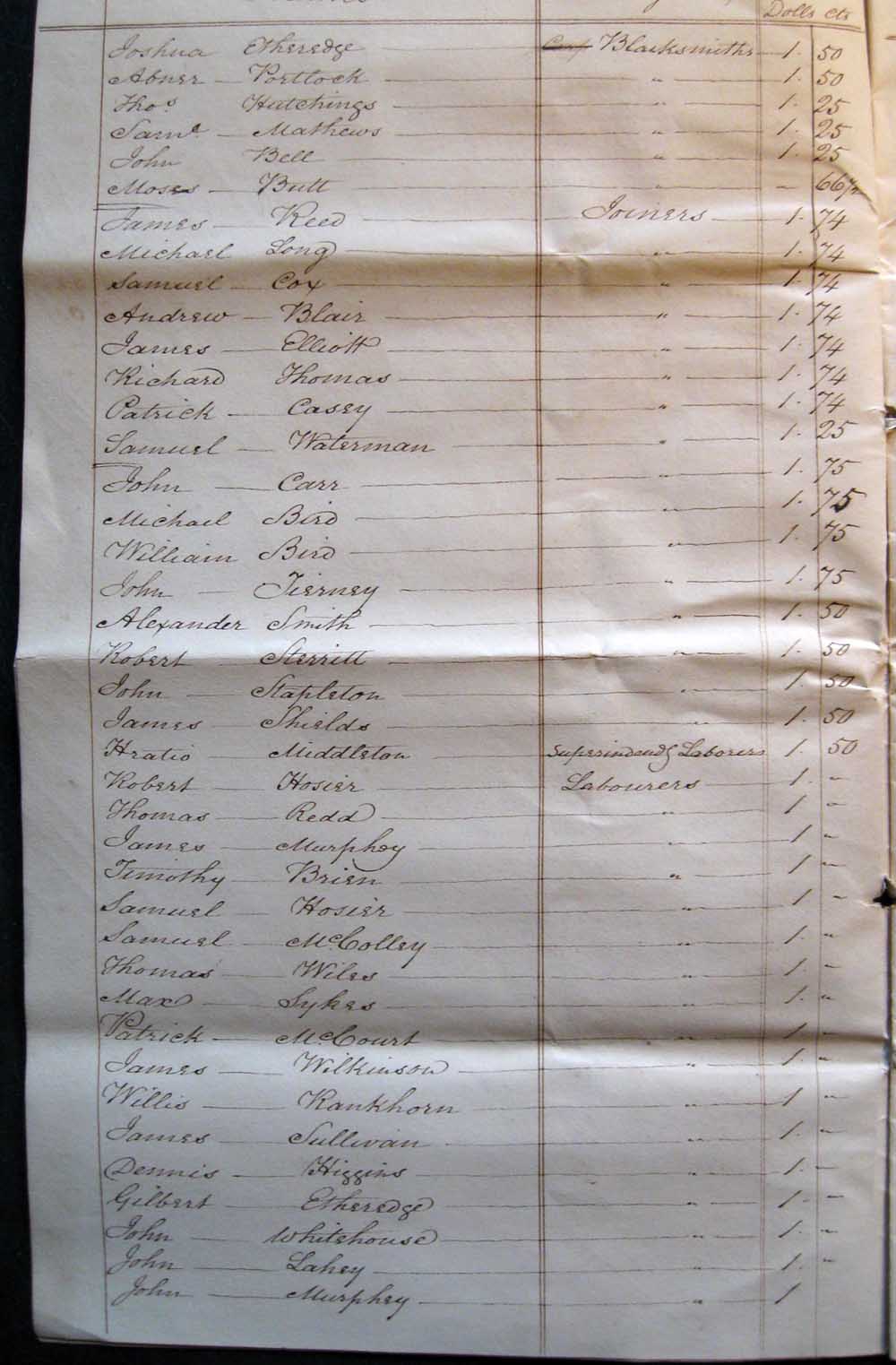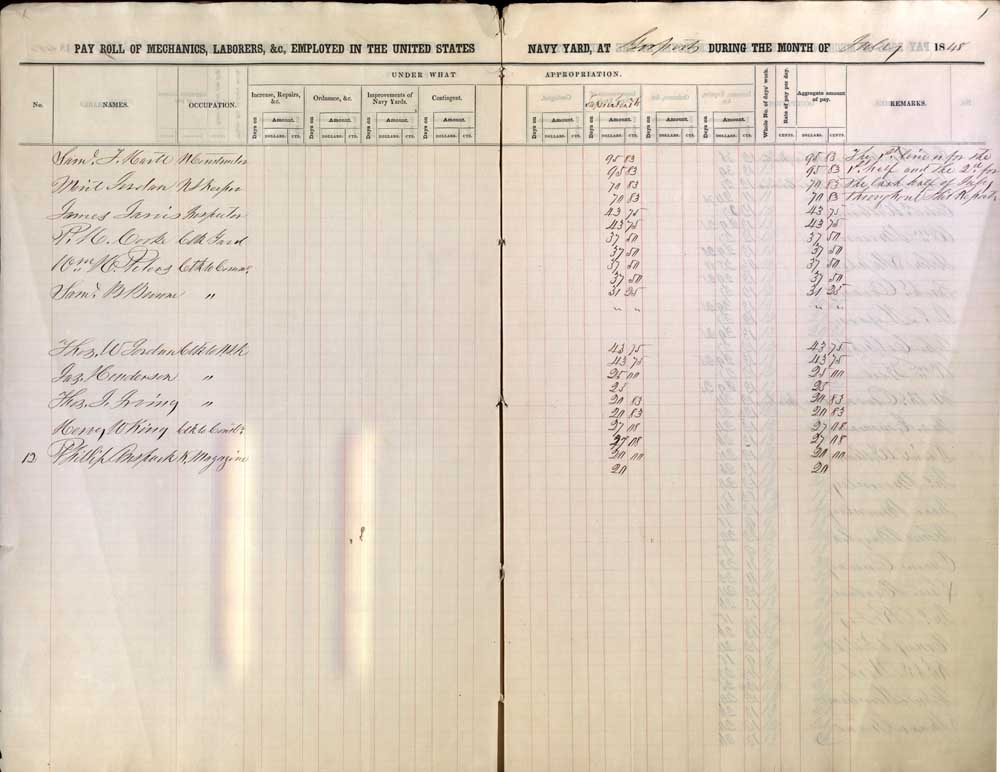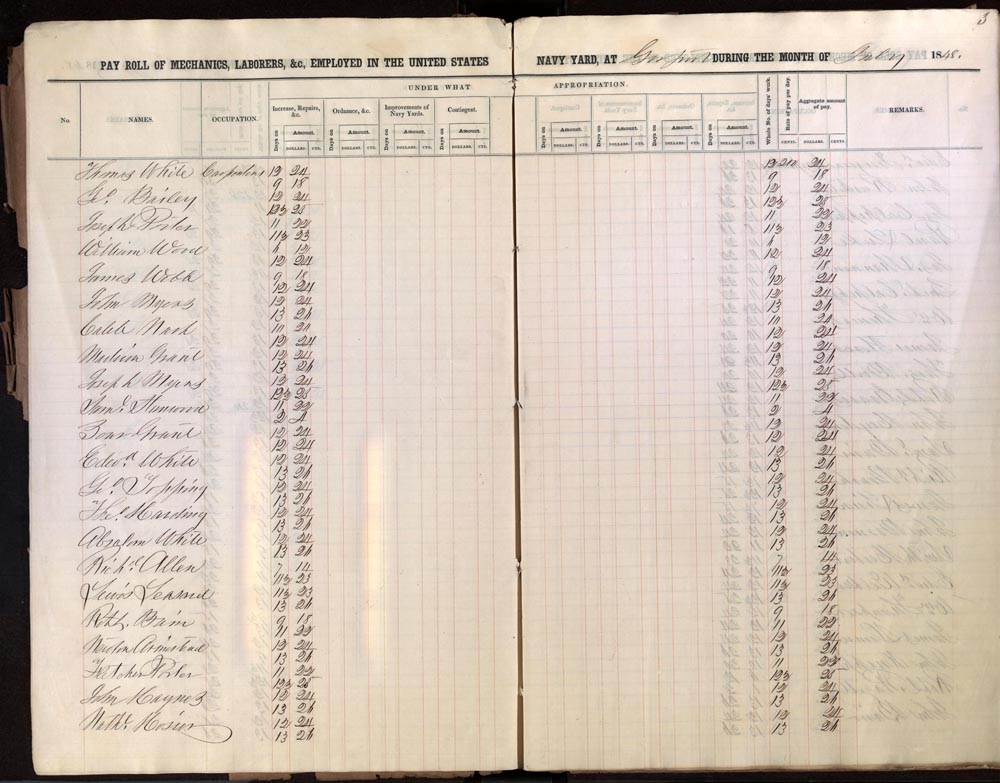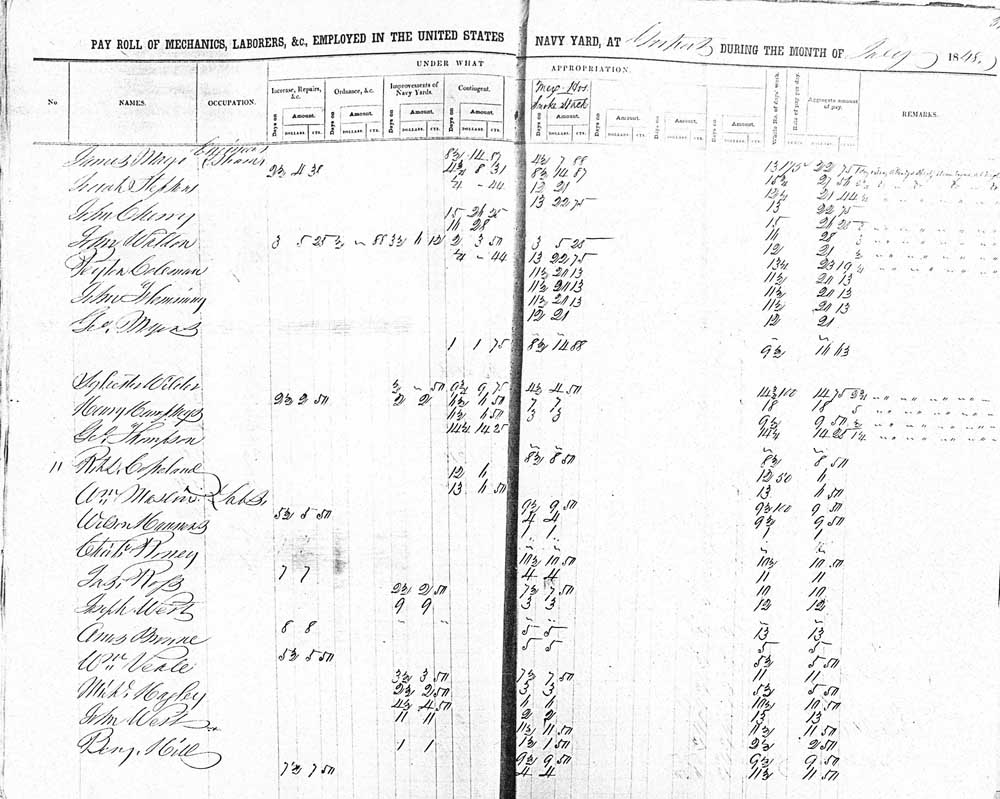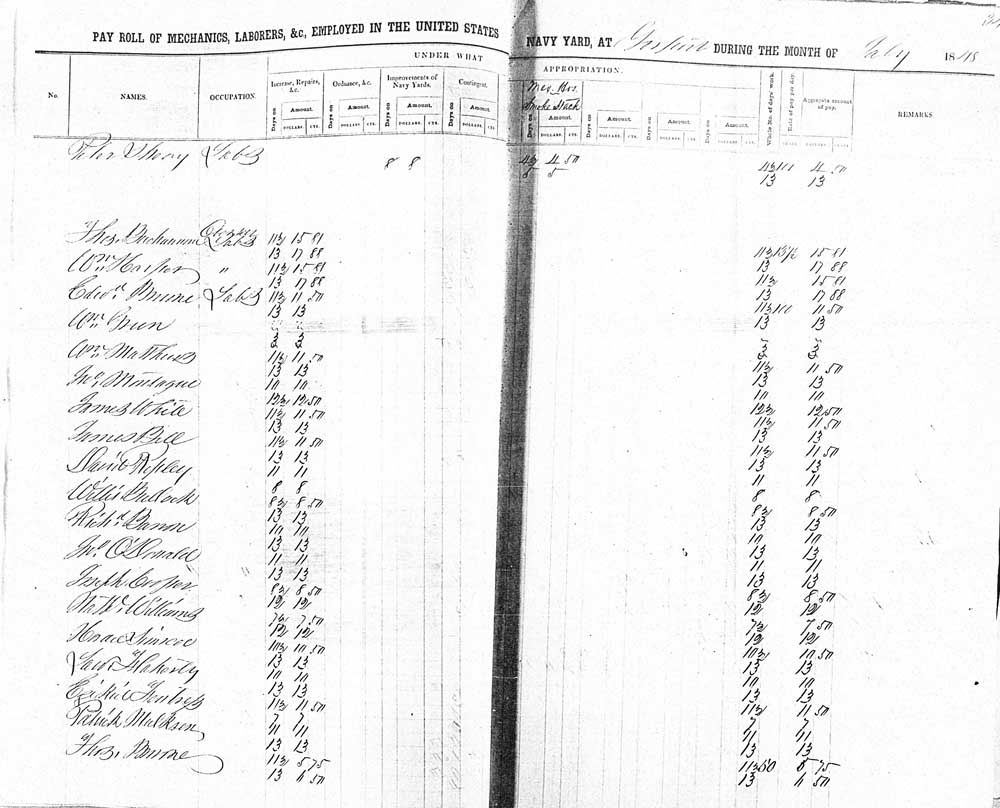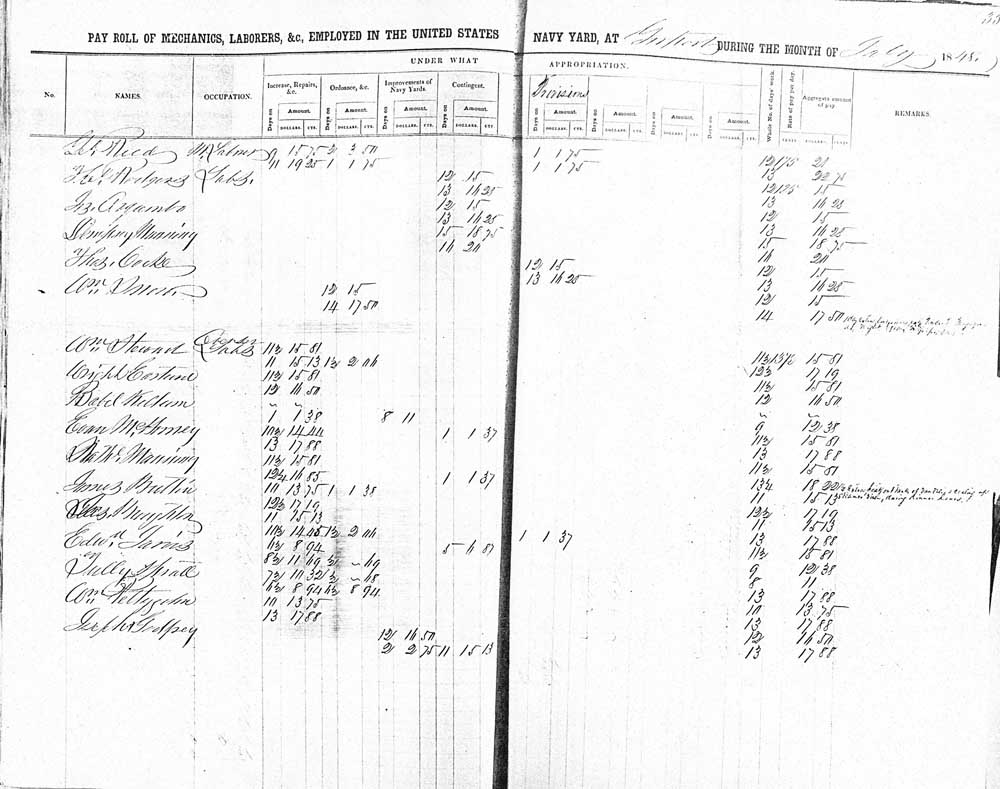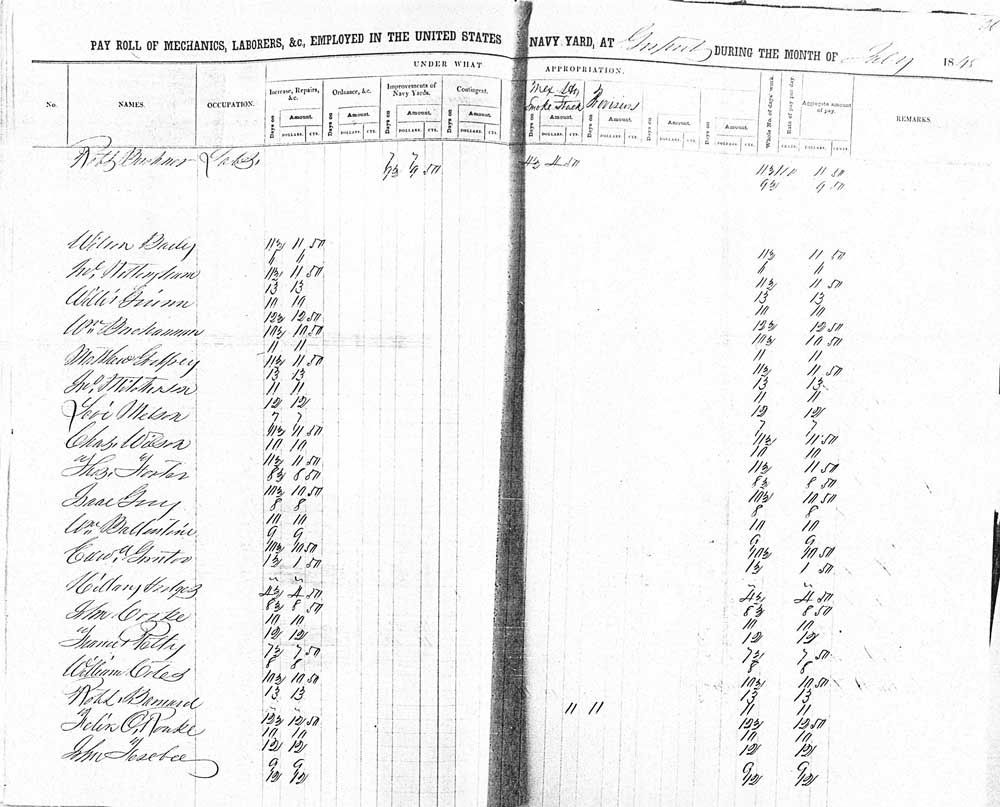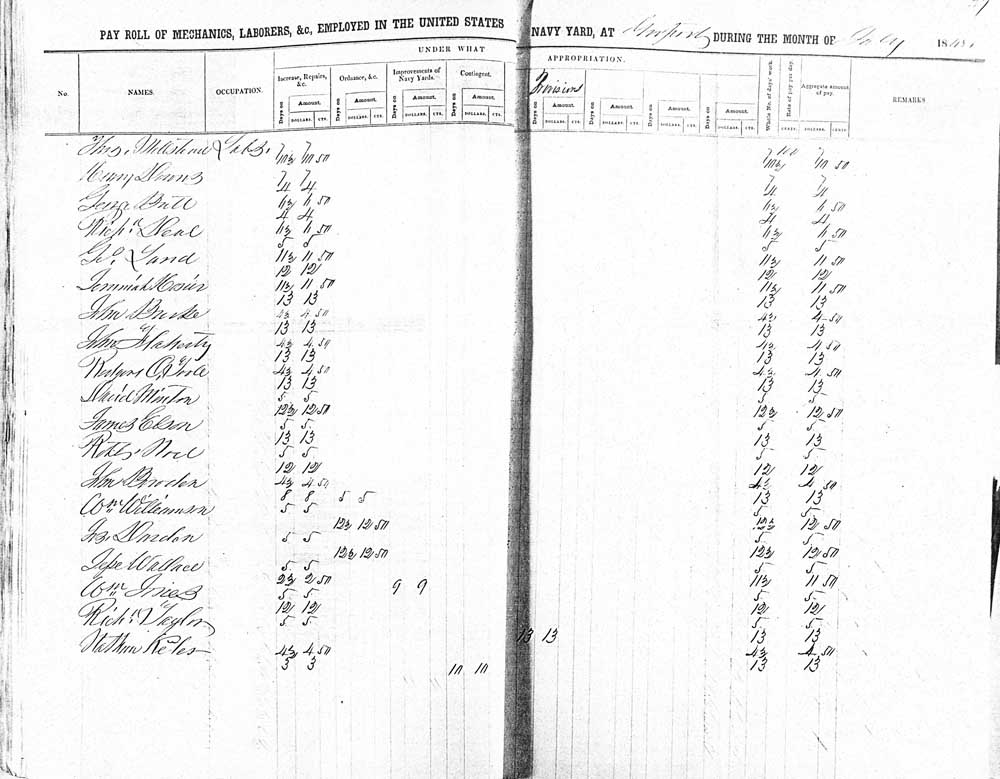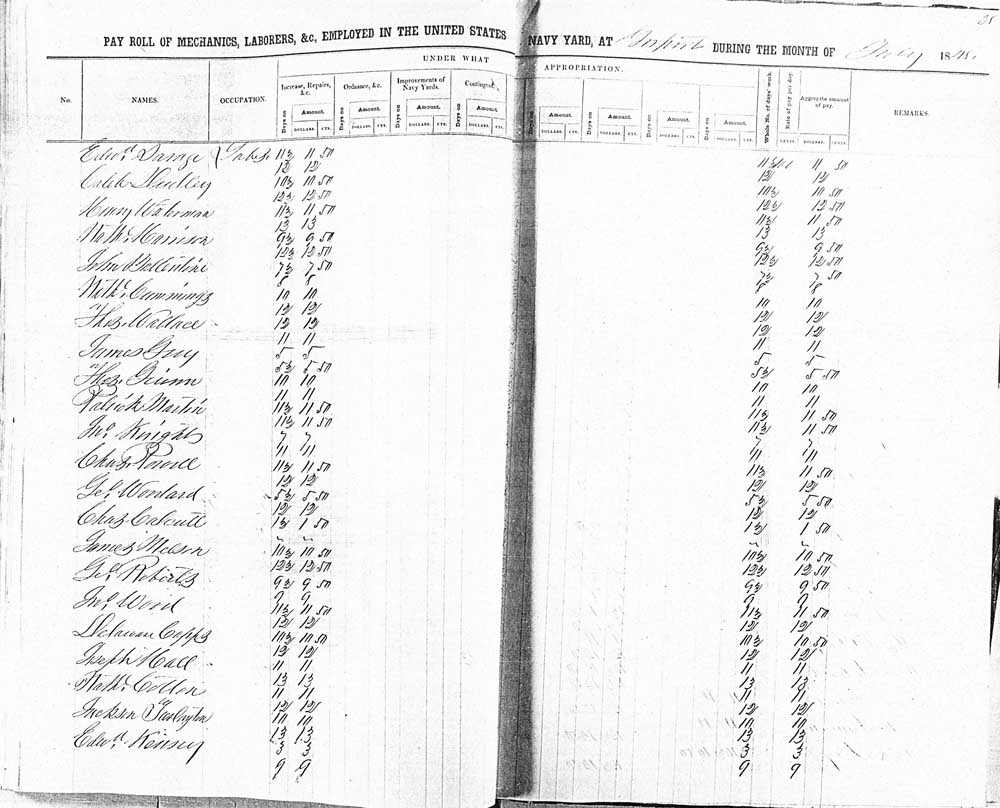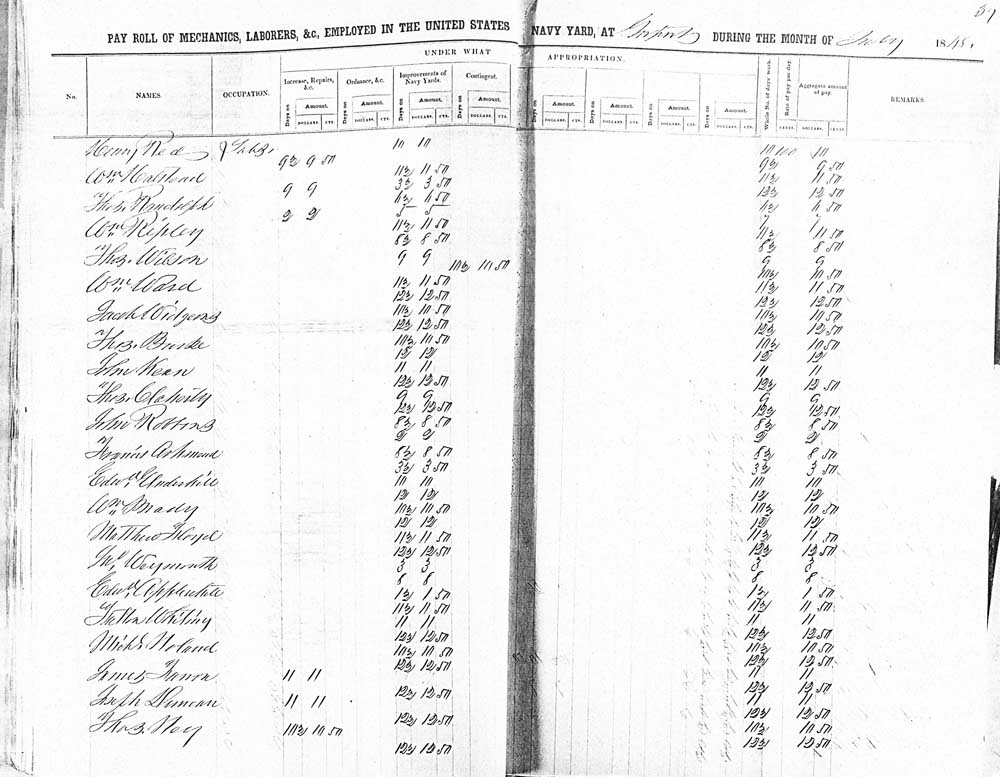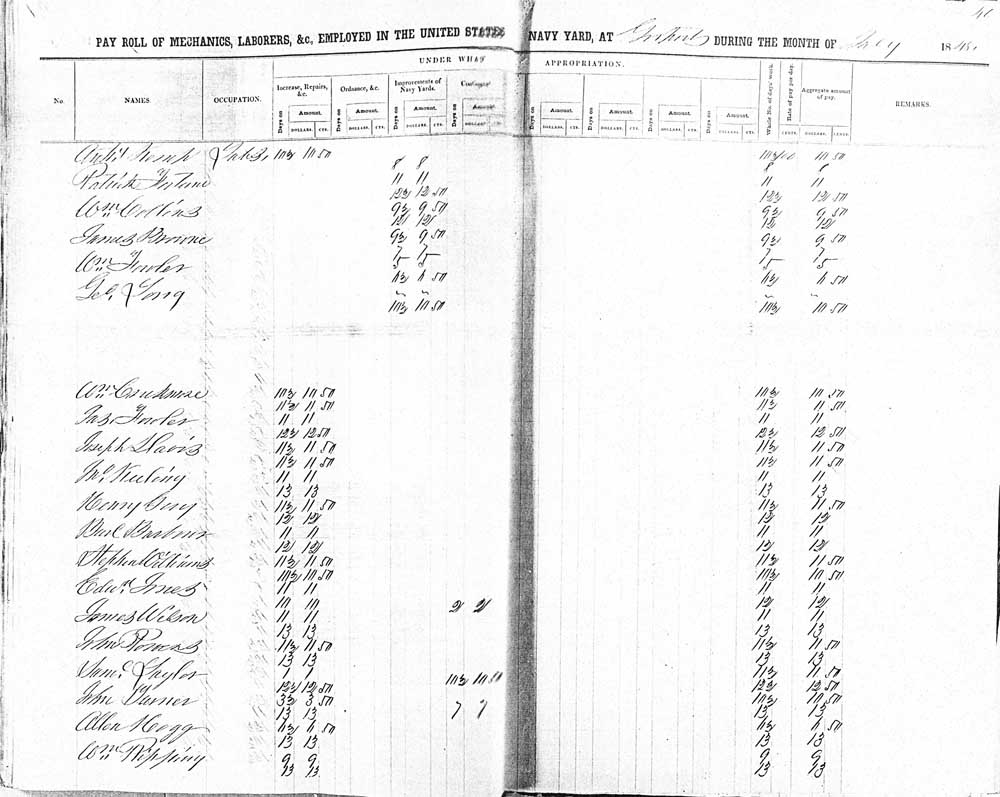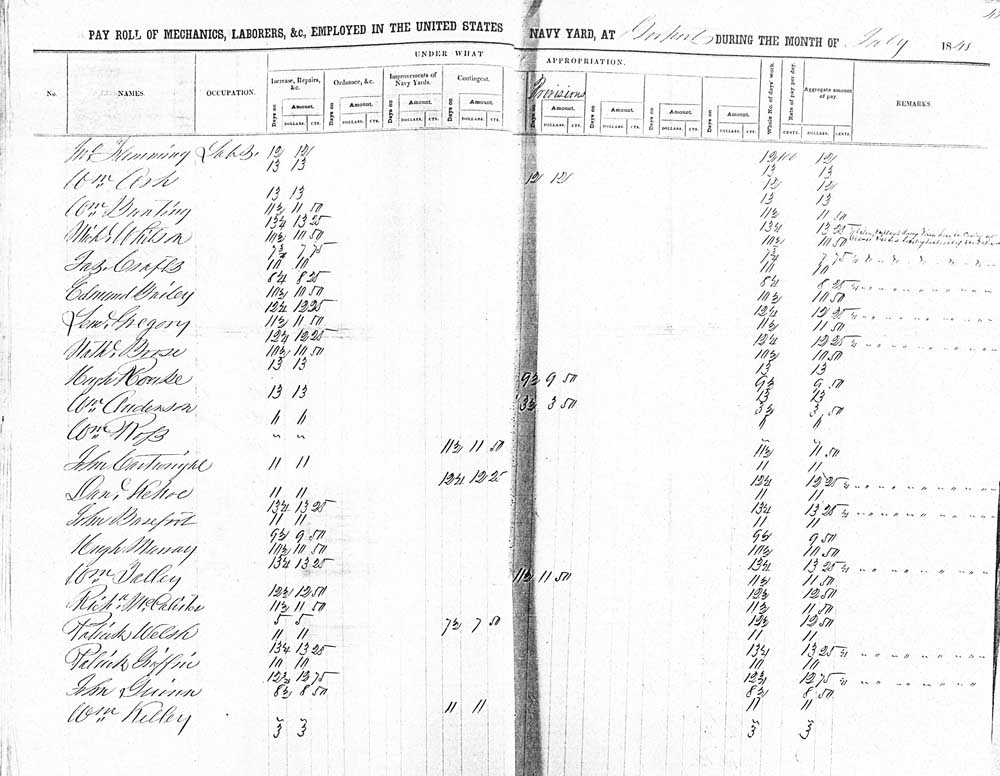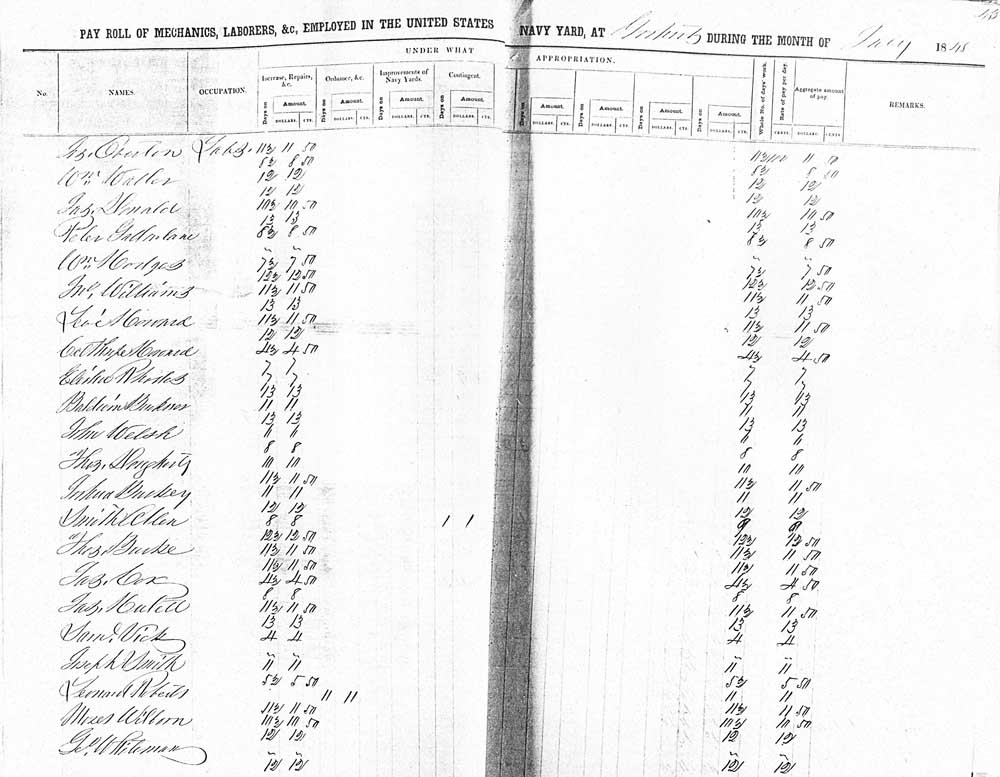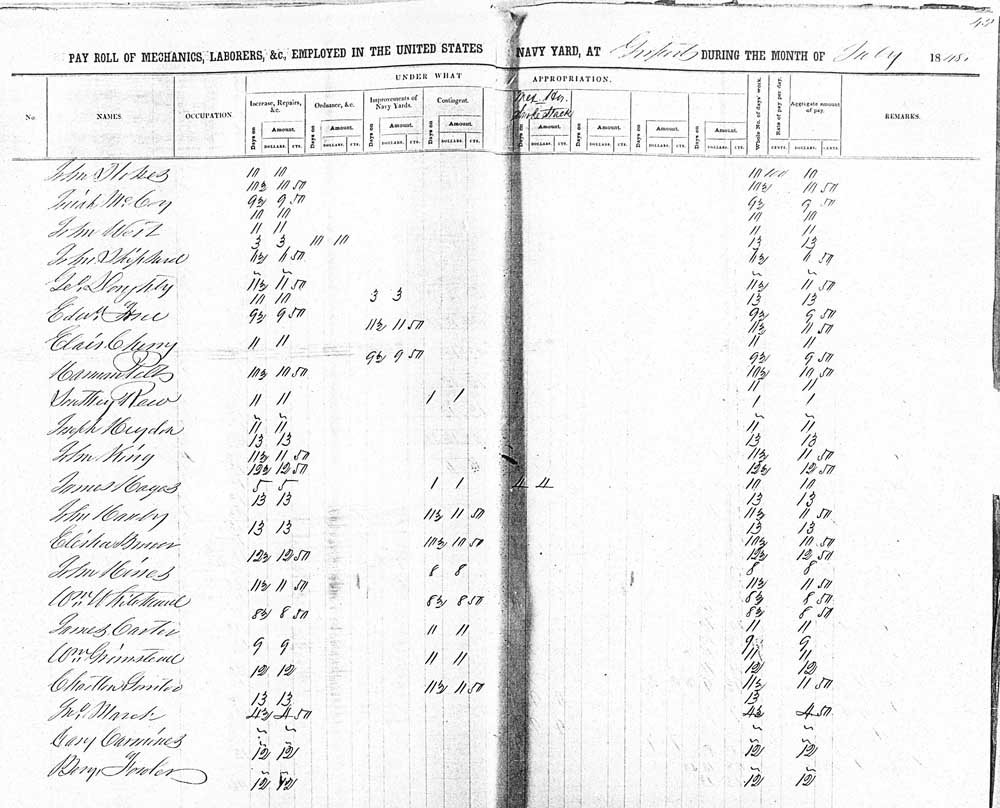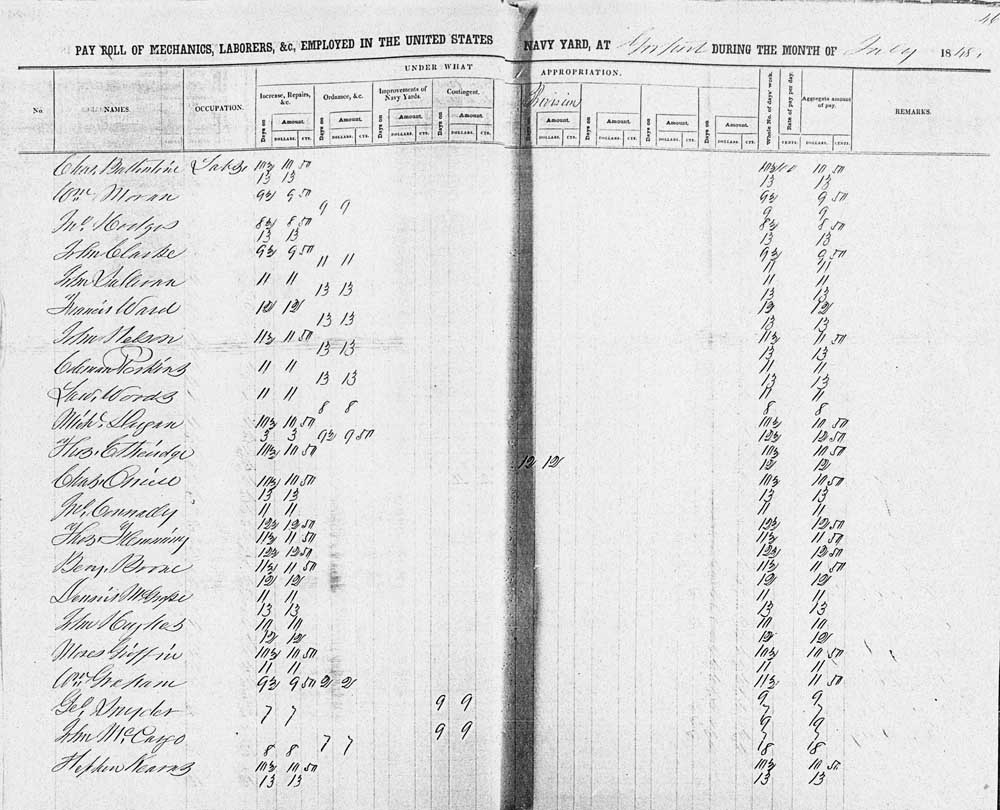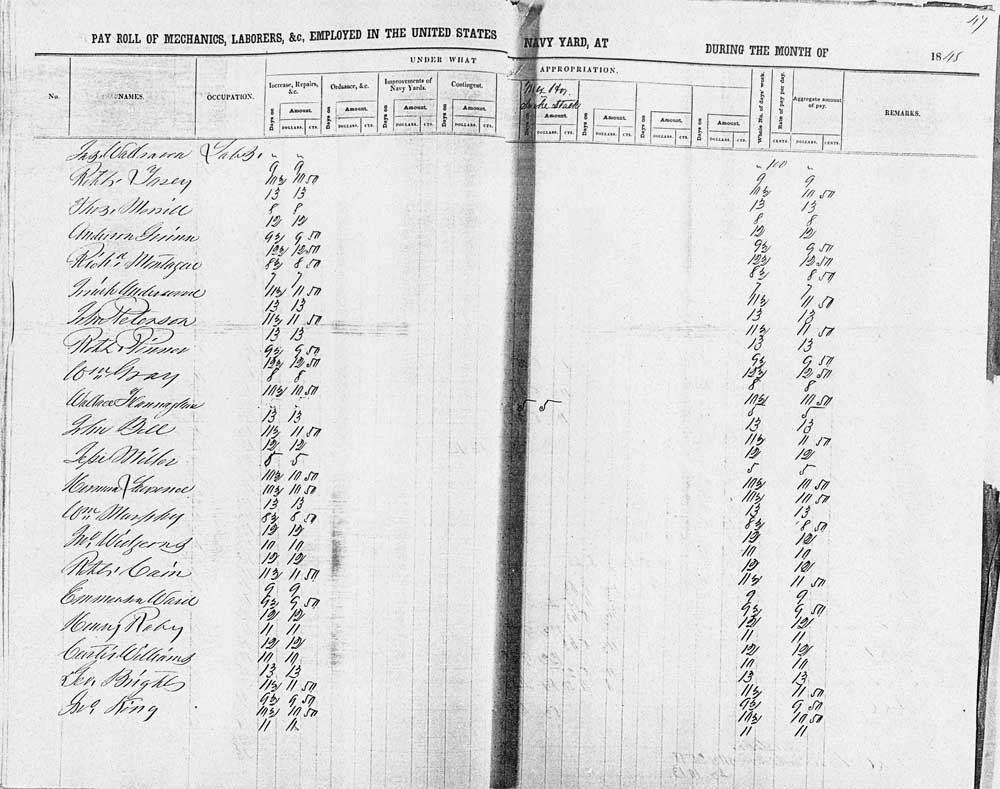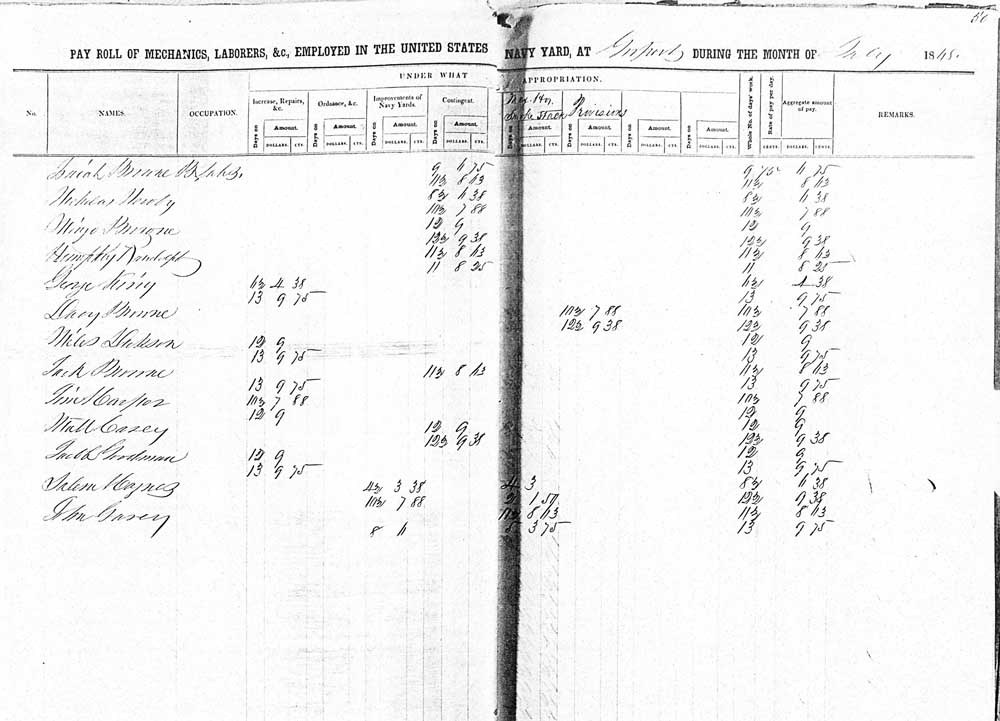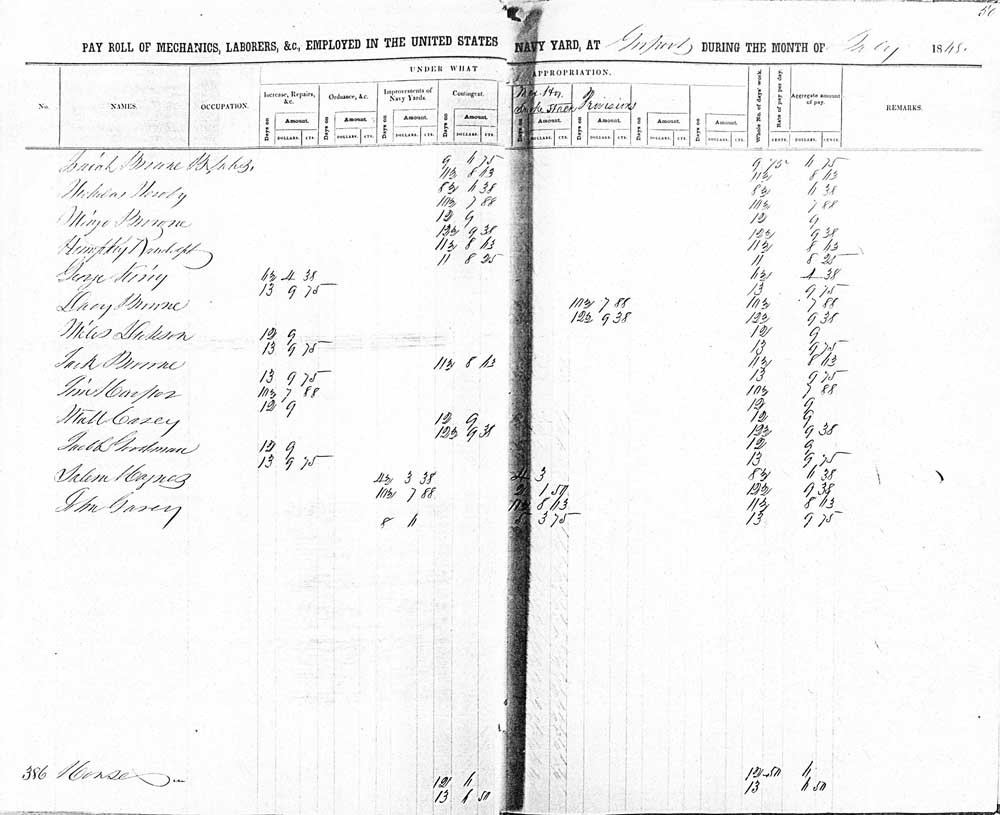Gosport Navy Yard Employees, Occupation & Per Diem Pay Rates
1. List of persons employed by the Year, including Master Workmen, Shewing the amount of the Salary,
Emoluments & pay per month, dated 12 May 1819
2. List of persons employed by the Year, including Master Workmen, Shewing the amount of the Salary,
Emoluments & pay per month, May 12, 1819.
3. Payroll of Mechanics, Laborers, &c, Employed in the United States Navy Yard Gosport During the Month of July 1848Introduction
Below are two transcribed Gosport Navy Yard documents (GNY); titled "List of persons employed by the Year, including Master Workmen, Shewing the amount of the Salary, Emoluments & pay per month" dated 12 May 1819 and the "Roll of Mechanics & Labourers employed in the Navy Yard at Gosport Virg -" circa 1819 – 1820. Together these two rolls compromise twelve pages of employee's names, occupations and per diem pay rates and annual salaries. The first document the payroll for May 1819 enumerates the names, job titles, salaries, and benefits of Gosport's Naval Constructor, Naval Store Keeper, Master Workmen and senior clerks. The second is a list of employee names, occupations, and per diem pay rates. Both documents reflect the early Yard social hierarchy, enumerate the names of its employees, and show the wide variety of GNY nautical crafts and occupations, some of those listed are now rare or obsolete e.g. "Mastmaker "and "Cooper" and of course the names of the wonderful ships they built.
The "List of persons employed by the Year, including Master Workmen, Shewing the amount of the Salary, Emoluments & pay per month" provides information regarding the Yards management cadre. Throughout much of its long existence the Gosport Navy Yard,, later known as Norfolk Navy Yard, had only few permanently stationed naval officers such Commandants John Cassin and Lewis Warrington. For much of the day to day management and supervision of its large civilian workforce the Commandant relied heavily on Master Workmen also referred to as Master Mechanics and Foremen. Each trade had a Master Workmen, individuals recognized as experts in their specialty usually with many years of trade experience. Master Workmen were often salaried employees and entitled to allowances for house rent. In 1819; eight of the Master Workmen was paid at least $ 600.00 per annum and often supervised large numbers of employees. Within each Navy Yard shop it was the Master Workmen who gave overall work direction through subordinate Quarterman and Leadingmen to the journeyman mechanics, laborers and apprentices. Master Workmen had the power not only to direct work operations, but more importantly to hire and dismiss mechanics and laborers and to appoint and supervised large numbers of trade apprentices.The "Roll of Mechanics & Labourers employed in the Navy Yard at Gosport Virg -" appear to be part of the work book of the "Clerk of the Checques", James Smith. The purpose of such Rolls was to serve as a master list of names, occupations and rates for per diem employees. James Smith's principal work responsibility as Clerk of the Checque was to insure musters for pay purposes were carried out in accord with naval regulations and that the daily muster logs were an accurate reflection of day to day labor. We owe the preservation and survival of this roll and the remaining early 19th century muster logs and pay rolls to chance and circumstance for it was not until well into the 20th century that these precious historical records were removed from the various Navy Yards to the keeping and protection of the National Archives and Records Administration. The surviving pages of this document have no date affixed to them but from internal evidence NARA archivists believe this roll was compiled sometime between 1819 -1820. This extended roll appears to list the names of all of Gosport's per deim mechanics and laborers.
Mechanics & Laborers
The early Navy Yard was highly structured organization with the Commandant at the top surrounded by a small group of trusted officers and the Master Workmen at the apex of the trade hierarchy. Just below them were the Quartermen, subordinate leaders of several work crews, they were assisted by "lead men" or crew leaders. The whole Yard structure depended on skilled trade mechanics or journeymen. The term mechanic in the early 19th century referred to a skilled tradesman who had successfully completed a five or six year trade apprenticeship in a particular field. Each trade had trainees or apprentices, young workers in training. Each trade apprentice signed a binding legal indenture or contract typically with a Master Workmen to return designated service in exchange for being taught a trade. Laborers at GSY were the unskilled men who performed heavy but necessary work, such as digging, pile driving, and pulling or hauling of ships and ship parts. Enslaved labor too made up a significant but generally unacknowledged part of the Navy Yard's antebellum workforce. The Navy Department occasionally took drastic steps to limit the number blacks, for example on 17 March 1817, they issued a circular to all naval shipyards, banning employment of all blacks and apparently questioning the activities of some whites:
